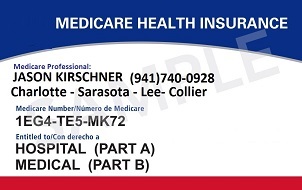When can I purchase Medigap insurance?
Buy a policy when you're first eligible
The best time to buy a Medigap policy is during your 6-month Medigap Open Enrollment Period. You generally will get better prices and more choices among policies. During that time you can buy any Medigap policy sold in your state, even if you have health problems. This period automatically starts the first month you have Medicare Part B (Medical Insurance) and you're 65 or older. It can't be changed or repeated. After this enrollment period, you may not be able to buy a Medigap policy. If you're able to buy one, it may cost more due to past or present health problems.During open enrollment
Medigap insurance companies are generally allowed to use medical underwriting to decide whether to accept your application and how much to charge you for the Medigap policy. However, even if you have health problems, during your Medigap open enrollment period you can buy any policy the company sells for the same price as people with good health.Outside open enrollment
If you apply for Medigap coverage after your open enrollment period, there's no guarantee that an insurance company will sell you a Medigap policy if you don’t meet the medical underwriting requirements, unless you're eligible due to one of the situations below.
In some states, you may be able to buy another type of Medigap policy called Medicare Select. If you buy a Medicare SELECT policy, you have rights to change your mind within 12 months and switch to a standard Medigap policy.
Find your situation below:| These states require the insurance companies to offer at least one kind of Medigap policy to people with Medicare under 65: |
| Arkansas | Kentucky | New Jersey |
| California | Louisiana | New York |
| Colorado | Maine | North Carolina |
| Connecticut | Maryland | Oklahoma |
| Delaware | Massachusetts | Oregon |
| Florida | Michigan | Pennsylvania |
| Georgia | Minnesota | South Dakota |
| Hawaii | Mississippi | Tennessee |
| Idaho | Missouri | Texas |
| Illinois | Montana | Vermont |
| Kansas | New Hampshire | Wisconsin |
| Note |
| A Medigap policy isn't available to people with ESRD under 65 |
| Note |
| Some states provide these rights to all people with Medicare under 65. Other states provide these rights only to people eligible for Medicare because of disability or only to people with ESRD. Check with your State Insurance Department about what rights you might have under state law. |
- Refuse to sell you any Medigap policy it sells
- Make you wait for coverage to start (except as explained below)
- Charge you more for a Medigap policy
- When you're in your Medigap open enrollment period
- If you have a guaranteed issue right
In some cases, the Medigap insurance company can refuse to cover your out-of-pocket costs for these pre-existing health problems for up to 6 months (called the "pre-existing condition waiting period"). After these 6 months, the Medigap policy will cover your pre-existing condition.
Coverage for the pre-existing condition can be excluded if the condition was treated or diagnosed within 6 months before the coverage starts under the Medigap policy. After this 6-month period, the Medigap policy will cover the condition that was excluded.
When you get Medicare-covered services, Original Medicare will still cover the condition, even if the Medigap policy won't cover your out-of-pocket costs, but you're responsible for the coinsurance or copayment.


